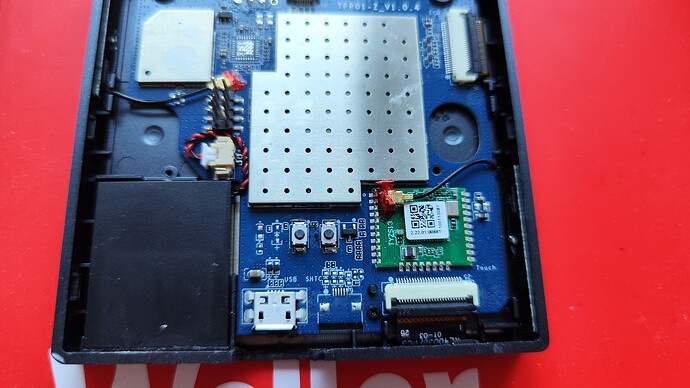Here’s my firmware dump: backup.bin - Google Drive
Binwalk output:
tasty@TASTY-MINT:~/Projects/rkdeveloptool$ binwalk backup.bin
DECIMAL HEXADECIMAL DESCRIPTION
--------------------------------------------------------------------------------
163856 0x28010 CRC32 polynomial table, little endian
688144 0xA8010 CRC32 polynomial table, little endian
1684936 0x19B5C8 AES S-Box
1689328 0x19C6F0 AES Inverse S-Box
1700464 0x19F270 CRC32 polynomial table, little endian
1711008 0x1A1BA0 LZO compressed data
1775735 0x1B1877 Android bootimg, kernel size: 1919249152 bytes, kernel addr: 0x5F6C656E, ramdisk size: 1919181921 bytes, ramdisk addr: 0x5700635F, product name: ""
1861291 0x1C66AB Base64 standard index table
2011648 0x1EB200 Flattened device tree, size: 7168 bytes, version: 17
2733512 0x29B5C8 AES S-Box
2737904 0x29C6F0 AES Inverse S-Box
2749040 0x29F270 CRC32 polynomial table, little endian
2759584 0x2A1BA0 LZO compressed data
2824311 0x2B1877 Android bootimg, kernel size: 1919249152 bytes, kernel addr: 0x5F6C656E, ramdisk size: 1919181921 bytes, ramdisk addr: 0x5700635F, product name: ""
2909867 0x2C66AB Base64 standard index table
3060224 0x2EB200 Flattened device tree, size: 7168 bytes, version: 17
3566976 0x366D80 DES SP1, little endian
3567232 0x366E80 DES SP2, little endian
3569152 0x367600 DES PC1 table
3569208 0x367638 DES PC2 table
3573792 0x368820 SHA256 hash constants, little endian
3590920 0x36CB08 Unix path: /lib/libtomcrypt/hash.c
4615552 0x466D80 DES SP1, little endian
4615808 0x466E80 DES SP2, little endian
4617728 0x467600 DES PC1 table
4617784 0x467638 DES PC2 table
4622368 0x468820 SHA256 hash constants, little endian
4639496 0x46CB08 Unix path: /lib/libtomcrypt/hash.c
5373952 0x520000 Android bootimg, kernel size: 4581171 bytes, kernel addr: 0x10008000, ramdisk size: 5652951 bytes, ramdisk addr: 0x11000000, product name: ""
5376000 0x520800 LZ4 compressed data
5419543 0x52B217 SHA256 hash constants, little endian
5426334 0x52CC9E AES S-Box
5426590 0x52CD9E AES Inverse S-Box
8952942 0x889C6E AES Inverse S-Box
8985650 0x891C32 AES S-Box
8994130 0x893D52 AES Inverse S-Box
9395113 0x8F5BA9 xz compressed data
9483197 0x90B3BD Base64 standard index table
9786950 0x955646 gzip compressed data, fastest compression, has header CRC, has comment: "", last modified: 1970-09-18 22:19:55 (bogus date)
9957376 0x97F000 gzip compressed data, maximum compression, from Unix, last modified: 2023-05-11 10:03:28
15613440 0xEE3E00 Flattened device tree, size: 72977 bytes, version: 17
15686656 0xEF5C00 PC bitmap, Windows 3.x format,, 480 x 480 x 8
28442624 0x1B20000 Squashfs filesystem, little endian, version 4.0, compression:xz, size: 24063118 bytes, 2100 inodes, blocksize: 131072 bytes, created: 2023-05-11 10:03:25
